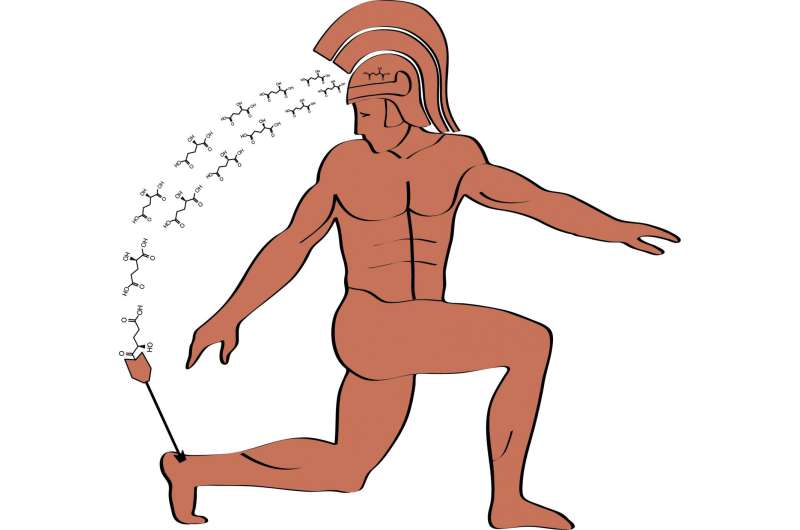Scientists identify key defect in brain tumor cells

In a new study, Yale researchers identified a novel genetic defect that prevents brain tumor cells from repairing damaged DNA. They found that the defect is highly sensitive to an existing FDA-approved drug used to treat ovarian cancer—a discovery that challenges current practice for treatment of brain tumors and other cancers with the same genetic defect, said the scientists.
The study was published on Feb. 1 by Science Translational Medicine.
Certain malignant brain tumors and leukemias have mutations in genes known as IDH1 and IDH2. The mutations render the cancers sensitive to treatment with radiation therapy or chemotherapy, significantly increasing the survival time for patients with the mutations. To better understand this sensitivity, a cross-disciplinary team of researchers led by Yale created models of the mutation in cell cultures.
The researchers tested several existing cancer drugs on the mutated cell lines. They found that tumor cells with the mutant genes were particularly sensitive to a drug, olaparib, recently approved for the treatment of hereditary ovarian cancer. The drug caused a 50-fold increase in brain tumor cell death.
Known as a PARP inhibitor, the drug acts on a defect in the DNA repair mechanism in the brain tumor cells, they said.
These findings run counter to current practices in oncology. "Our work at Yale has practice-changing implications, as our data suggest an entirely new group of tumors can be targeted effectively with DNA repair inhibitors, and that possibly these patients currently are not being treated with the most optimal approaches," said senior author Ranjit Bindra, M.D., assistant professor of therapeutic radiology and of experimental pathology.
Co-senior author Peter Glazer, M.D., professor of therapeutic radiology and of genetics, noted, "Our work raises serious caution regarding current therapeutic strategies that are aimed at blocking mutant IDH1 and IDH2 protein function, as we believe the DNA repair defect should be exploited rather than blocked."
Based on these studies, the authors are designing a clinical trial to test whether DNA repair inhibitors, such as olaparib, are active against IDH1- and IDH2-mutant tumors. They anticipate that this trial will be open for enrollment later in 2017.
"The opportunity to translate Yale science directly into the clinic is just so exciting, as it shows our ability to pivot seamlessly between the bench and the bedside, which is a key mission of our cancer center," says Bindra.
More information: "2-Hydroxyglutarate produced by neomorphic IDH mutations suppresses homologous recombination and induces PARP inhibitor sensitivity," Science Translational Medicine, stm.sciencemag.org/lookup/doi/ … scitranslmed.aal2463















